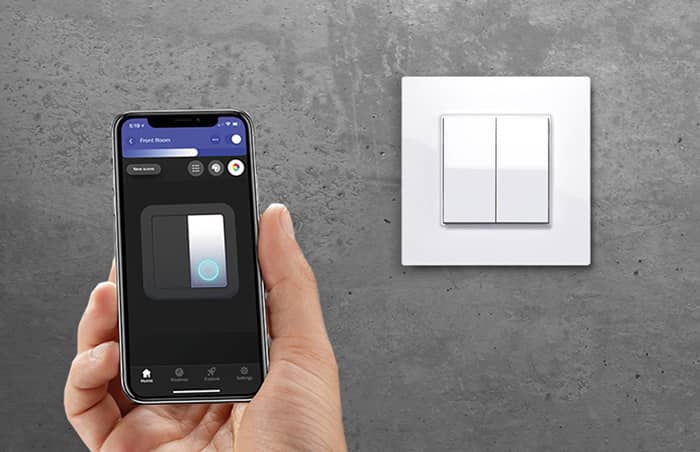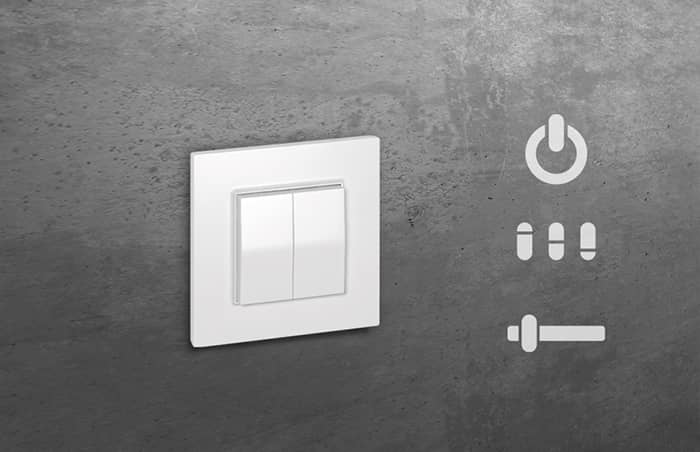
How does a smart light switch work?
With a smart home light switch, you can easily make your lights part of an intelligent system. These replace the existing buttons in your home and can be operated via app, voice control or manually.
Depending on the model, it can also be installed without connecting to power cables or a flush-mounted box. Depending on the provider, the intelligent switches draw their energy either from batteries (approx. 3 years' service life) or from Energy Harvesting Technology. With this, energy is generated from the mere press of a button.
Depending on the size and networking of the smart home system, the switches work via WLAN, Bluetooth or radio connections such as Zigbee or Thread. The latter enable longer ranges to be generated and are suitable not only for home use but also for use in huge building complexes.
Setting options and individual functions
Smart home lighting has come a long way in recent years and puts human needs first. Your lights can be configured and used accordingly.
With the help of a smart home light switch, you can save recurring settings and frequently used functions. They can be called up at any time at the push of a button without being able to make any adjustments.
You can assign commands to the individual buttons as you require them. This can be, for example:
-
turn the lights on and off
- Dimming/infinitely variable regulation
- Setting the light temperature
- Control of light colors
- Calling up fixed sceneries
Imagine you have found the optimal light setting for your work in the home office. A touch of a button when entering your office is all it takes to adjust your lighting accordingly. Finally, you can start the end of the day by pressing another button - perhaps with a more comfortable light color or slightly dimmed brightness.


How are smart home switches installed?
The installation of intelligent switches is quite uncomplicated and sometimes possible without interfering with the electrical system. However, this mainly depends on which functions you want to use:
You can attach smart home switches with adhesive frames yourself. These are simply pressed onto a flat and clean surface and thus attached.
So-called superstructure frames are suitable for replacing an existing light switch - without a specialist. All you have to do is remove the cover. Since the switch insert remains in the flush-mounted box, you do not come into contact with the power cables inside.
In theory, you can also use these versions as a remote control and operate them from anywhere (within range).
Fixed in place of the existing switch, radio switches with mounting frames can be placed. This is necessary if you choose a hidden socket - a combination of smart home switch and working socket. This type of installation is also practical if you don't just want to network lamps, but the circuit.
You should have the attachment carried out by a specialist.
Smart home switches in combination with the systems
The hidden socket is available in different versions and can be used for Philips Hue, Casambi and EnOcean:
You should consider this when buying
The prerequisite for retrofitting with smart home light switches is that they are compatible with your system. Conveniently, there are now a few suppliers whose smart accessories can be connected to many smart home brands.
You can use the smart home light switches from Versteckdose, for example, very widely. From small home applications to huge networks in companies. In addition, they are compatible with well-known systems such as Philips Hue, Casambi or EnOcean.

